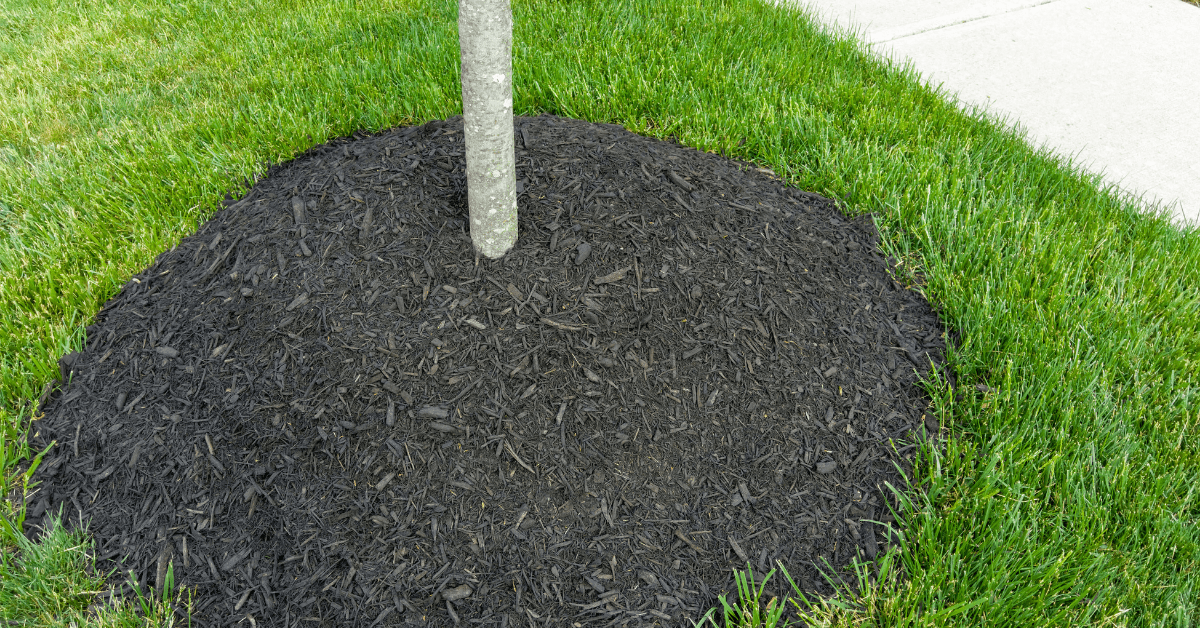
Mulch is a helpful tool used to suppress weeds, retain moisture and moderate soil temperatures in your customers’ flower beds. Naturally, some people assume if something is good, even more is better.
This is not the case. Having too thick of a layer of mulch can prevent water and nutrients from reaching the plant roots.
The best time to put down mulch is mid- to late spring as this allows the soil to warm up. If you add mulch too early, it can delay when plants emerge in the spring.
Proper Mulch Application
The effectiveness of the mulch depends on the density and texture of the material used, but in most situations, a 2- to 4-inch layer is what is necessary to hamper weed growth and insulate the soil.
Mulching new trees when they are planted helps them become established. Having a mulched area around trees also makes mowing easier and prevents mower or string trimmer damage to the trunk.
When applying, spread the mulch out to the outermost edge of the “drip line.” This should expand as the tree grows.
For tree health, make sure the material is not touching the trunk. The root flare, where the trunk meets the soil, should be showing. If the mulch material is finely textured use 1 to 2 inches since these materials allow less oxygen to reach the root zone.
Harmful Effects of Mulch Volcanos
Unfortunately, many have taken mulching trees to the extreme where the pile almost looks like a volcano there is so much mulch around the base of a tree.
If you have followed suit in the past and piled copious amounts of mulch at the request of a customer, or if you’ve noticed a client has been applying extra mulch on their own, take the time to educate them on the problems that can occur from overmulching.
- Root suffocation. When too much mulch covers the soil surface, air may not be able to penetrate through. A mulch volcano can also inhibit water loss, filling soil pores with water preventing the diffusion of oxygen. When the soil oxygen level drops too low, root growth declines and the tree may die if too many roots decline.
- Bark death. When mulch covers the root flare and trunk, it stays constantly wet and the inner bark will die if the wet conditions continue long enough.
- Insects and disease. Moisture-loving insects like termites and most fungal and bacterial diseases can thrive and gain access to trees that are overmulched due to the wet, decaying bark. Cankers caused by diseases can circle the tree, kill the inner bark, starve the roots and possibly kill the tree.
- Excessive heat. Not only do mulch volcanos create constantly moist conditions, but they also can heat up as decomposition begins. The heat can kill the inner bark of young trees or delay the hardening-off period the trees go through before winter.
- Rodent damage. Voles and mice can burrow in thick layers of mulch for shelter and gnaw on the inner bark of young trees. If girdling is extensive, the tree can die. The damage can go unnoticed until the following spring when the tree doesn’t leaf out.

